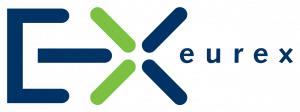 Connectivity of indirect exchange participants
Connectivity of indirect exchange participantsDesigning markets recognizes that well-functioning markets are more than the confluence of supply and demand. They depend on detailed rules. Market designers try to understand the rules and procedures as well as the workings and requirements of particular markets well enough to fix problems or to build completely new markets when they seem promising.
This is the third article in a series of topics related to the market design of electronic market places.

The first article discussed the most common execution models in electronic derivatives markets, while the second covered the various components of an order-generating process that define its arrival time. It thus gave an overview of the three steps market participants need to generate and submit an order to an exchange whereby connectivity drives the third step. We explained that for all participants timing matters but that ‘timing’ means different things to different market participants. Today, we are looking at the electronic connectivity of market participants who are not members of an exchange (i.e. indirect participants), typically institutional investors, but also retail investors.
The electronic connectivity of market participants
Traditionally, investors would get in touch with their brokers via phone to place an order, which was then transmitted by the broker to the exchange. Transmission happened electronically but also by phone, when sent to the floor based exchanges. Those days are long gone for large parts of the order flow, as today even most retail investors submit their orders electronically. However, the phone still plays a significant role in bespoke products or for large or complex orders in exchange listed products. This article only addresses the connectivity of the indirect participants to the electronic market place.
Two major electronic paths: Direct Market Access (DMA) and Order Routing
Starting with the regulatory framework, after the enactment of MIFID II in January 2018, we need to differentiate two major electronic paths into Eurex for institutional or retail investor orders: Direct Market Access (DMA) and Order Routing. Under German exchange law for both paths the exchange member is responsible when clients’ electronic orders are sent through their infrastructure to the exchange and are liable should there be any exchange rule violations or infringements.
The traditional model, resulting from this German regulatory requirement, is Order Routing. In this case, the exchange participant, after the regulatory prescribed risk controls, takes control of the indirect participant’s order , before this client order reaches the exchange. That means that once the order has been submitted to the broker, the broker’s systems are in control over when and/or how the order arrives in the exchange. At Eurex this path of indirect participant exchange connectivity has existed for a long time and continues to be a viable path under MIFID.
The new MIFID II-derived alternative for transmitting orders to Eurex is DMA. With DMA the broker system runs the regulatory prescribed risk controls on incoming customer orders, after these checks, however, the client order passes straight through the broker’s infrastructure/connectivity to the exchange, without any further interaction with the client order by the broker. Until the arrival of the order in the exchange’s order book, the indirect participant is “theoretically” in charge of the process. The term “theoretically” is used, as practically, the whole process takes far less than a second, which makes it difficult for the indirect participant to stop or steer his order on the way to the exchange once he has triggered the electronic process. MIFID requires that indirect participants, dealing on their own account, using DMA, or other electronic paths, need to be authorized as investment firm or an equivalent regulation.
The next article will be on the connectivity of the exchange members. For most of this group, the speed of sending orders is of much greater relevance.











